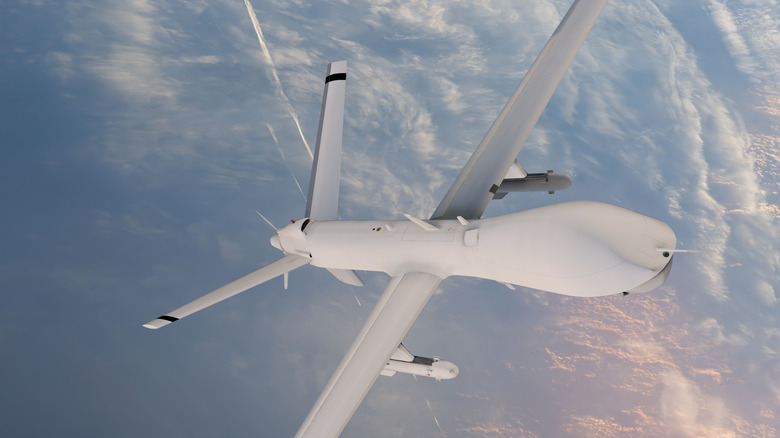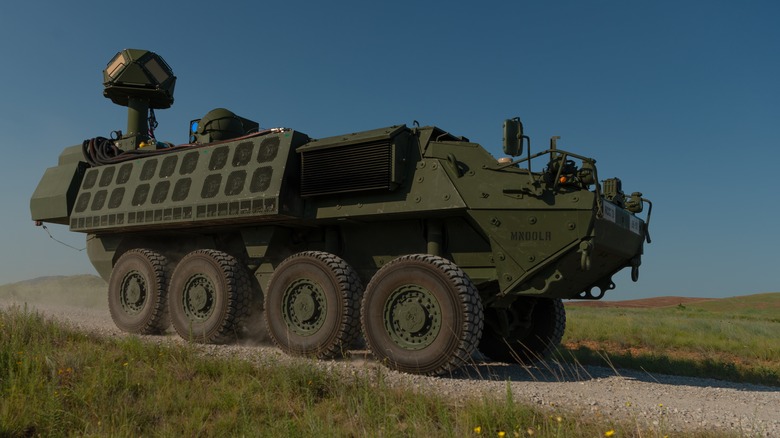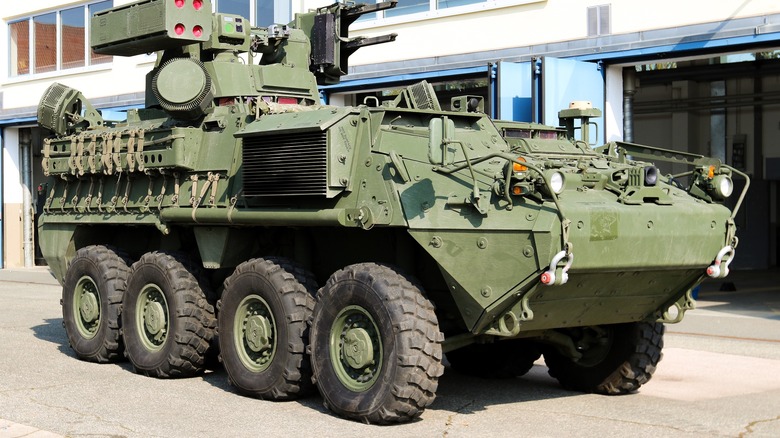

Laser Armed Vehicles Will Be Joining The Army
source link: https://www.slashgear.com/1142761/laser-armed-vehicles-will-be-joining-the-army/
Go to the source link to view the article. You can view the picture content, updated content and better typesetting reading experience. If the link is broken, please click the button below to view the snapshot at that time.

Laser Armed Vehicles Will Be Joining The Army
Think of warfare in 100 years, and you'll probably picture a bunch of space marines taking pot shots at each other with laser rifles as they fight for an independent Mars. On the face of it, that sounds pretty ridiculous, but one part is already a reality: Laser weapons are real, they've been in development for a long time, and the U.S. military is about to take delivery of a few finished products. However, they aren't the highly-portable laser rifles you'll remember from things like "Star Wars" and "Mass Effect."
What do you get if you strap an incredibly powerful laser to a Stryker infantry armored vehicle? You get a DE M-SHORAD, or Directed Energy Maneuver Short-Range Air Defense, which is a highly mobile vehicle capable of blasting threats out of the sky in a very short space of time. As its official name is a bit of a mouthful, the DE M-SHORAD has been christened "the Guardian," and that name might be pretty apt. If it does what the U.S. military expects it to do, it could protect ground troops from some of the most dangerous and common threats on the modern battlefield. A "laser platoon" will also be formed to manage the first batch of DE M-SHORAD when they arrive.
Laser weaponry is powerful, and has a long list of benefits
The "Guardian's" laser weapon is a staggering 50 kilowatts, which is pretty powerful as far as energy weapons go. To put it into context, a 30 kilowatt laser Lockheed Martin tested almost a decade ago managed to destroy a pickup truck by burning a huge hole through its engine block. Melting the truck's hood and engine only took a few seconds. A beam director is mounted on the roof, which is what the "laser beam" comes out of, and a highly advanced tracking system keeps the beam of energy on the target until the target is no longer a threat (via Army Recognition).
As well as being powerful, a shot from a laser is far cheaper than launching a rocket or missile. Each shot uses energy stored in a battery bank on the Stryker infantry armored vehicle. The battery itself is recharged by the armored vehicle's engine, and there is enough juice to get a reasonable number of shots off before troops will be stuck waiting for the charge to build up again. The lasers also save the military money in other ways.
Rockets, shells, and missiles tend to take up a lot of storage room and cost even more to transport — whereas the laser's ammo is its battery bank. Other benefits include a reduction in collateral damage. There won't be parts of a missile falling back to Earth with its former target, and if the laser does somehow miss, it just keeps going in the same direction instead of eventually landing somewhere it shouldn't.
What will firing the laser look like?

When that 50 kilowatt laser is pointed at something like a drone, a few things can happen. The outside surface of the drone will heat up — from there, parts could warp and buckle, rendering it unable to fly. The drone's engine could be destroyed, as its temperature skyrockets beyond its operating threshold, or its fuel tank may simply detonate. Even if the drone itself somehow survives, its sensors may be severely damaged by the laser hit — essentially rendering it blind.
While seeing a drone blow up in mid air might be pretty cool, the laser itself is less visually and audibly impressive. There is no red beam and there is no "pew-pew." The laser is invisible to the human eye and makes no sound. On the ground, you'll just see the targets bursting into flames, blowing up, or just falling out of the sky as the DE M-SHORAD does its thing. Nobody's really firing it either. A targeting computer and sensors will be doing most of the work, and this is probably for the best. Trying to pick out an artillery shell dropping at 300 meters a second is pretty difficult.
The U.S. Military will get its first laser platoon next month
A U.S. Army fort will take possession of four DE M-SHORAD Stryker vehicles, each of which has a 50 kilowatt laser attached, in January 2023. Speaking to Task and Purpose, a spokesperson from the Army's Rapid Capabilities and Critical Technologies Office (RCCTO) said that the vehicles will be sent to Fort Sill, Oklahoma. The spokesperson also added that the military has already started preparing for the laser armed vehicles' arrival by initiating "the prototype New Equipment Training and New Equipment Fielding for the first DE M-SHORAD prototype platoon."
The laser weapons finally becoming available follows several delays in the program. If everything had initially went to plan, soldiers at Fort Still would have received the first batch of Guardians before October this year. However, this was pushed back to ensure the manufacturing process wouldn't get in the way of the weapon's system's potential success. Speaking to Defense News, Lt. Gen. Robert Rasch, head of RCCTO, said, "We want to make sure when we actually transition a program or a capability that we mature not just the prototype from an operational capability but have a good competitive space and good manufacturability processes in place as well to make that PEO successful."
At present, there is no indication that there will be any further delays, and the U.S. Army should be kicking off 2023 with a small batch of laser armed vehicles at its disposal. Despite the lasers being at the cutting edge of weapons technology, they're unlikely to be pointed at enemy troops any time soon. The weapon's designers, and the military itself, had different — arguably far more dangerous — targets in mind.
The laser weapons probably won't be used on people

As things stand, you're unlikely to see "lasers" being fired at regular troops on the battlefield. Instead they're probably going to be used to counter threats from the air — one of which is pretty old, and the other quite new.
Mortars have been around for centuries. In the early days, a mortar would launch something like a cannonball up at a steep angle so it would drop down on an enemy from above. They were very useful when attacking castles, as you could fire over the walls, or fighting in rough terrain as you could hit enemies without having a direct line of sight to them. They are still useful for similar reasons today, and the simplicity of the mortar makes it popular with everyone from small insurgent groups to the world's best-funded militaries. The main difference with a modern mortar is, instead of a rock or cannonball, it tends to fire a highly explosive shell.
It is hoped the laser could protect troops from mortar shells by quickly targeting the incoming threats and incapacitating them. This can be done by heating up the shell so it explodes while still high in the air, or melting its fins so the shell's accuracy is impacted and it hopefully misses.
The lasers could also be focused on a more high-tech aerial enemy — drones. Drones are a devastatingly effective part of modern warfare, allowing armies to accurately destroy targets without risking their own lives. The recent conflict in Ukraine shows just how damaging drones can be when used properly. The most common counter-drone method today is jamming, which can be unreliable. The new lasers could be a very effective way of countering one of the biggest threats on a modern battlefield.
Recommend
About Joyk
Aggregate valuable and interesting links.
Joyk means Joy of geeK

